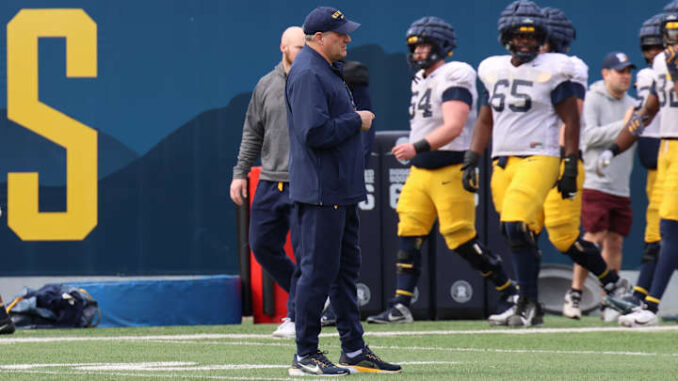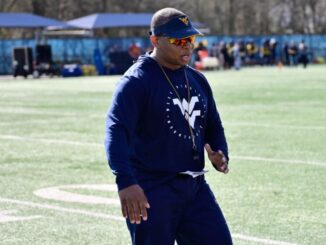
The West Virginia University football team held its 10th spring practice on Tuesday morning, with head coach Rich Rodriguez speaking to the media afterward about the final two weeks of spring training.
Spring Break Evaluations
Rodriguez used the break to review the program’s recruiting list, assessing film on 110 players, including 2026 high school prospects. He also spent time evaluating the team’s current roster and structured recent practices to include more competitive drills to better assess individual performances.
Reducing the roster to the NCAA-mandated 105 players remains a challenge, and Rodriguez believes the NCAA should allow exceptions for players already on the team. “We shouldn’t have to cut guys we don’t want to cut,” he said, advocating for a larger roster size.
Players Playing Both Ways
Rodriguez acknowledged that despite having 85 scholarship players and about 20 walk-ons, some athletes might need to play on both offense and defense. He pointed to Travis Hunter’s success at Colorado as an example, suggesting that WVU could have players capable of playing defensive end and tight end, linebacker and tight end, or even wide receiver and safety.
Player Retention & Transfer Portal
Rodriguez supports having a single transfer portal period instead of two, arguing that it would provide teams with a clearer picture of their roster. While every team will likely lose some players, he remains hopeful that WVU can retain its key contributors.
Looking ahead to the revenue-sharing changes coming in July, Rodriguez noted that players who perform well will be in a strong position financially, as will players across the country.
Roster Selection Criteria
When evaluating players for the final 105-man roster, Rodriguez prioritizes those who contribute to winning. Beyond athletic ability, he values attitude, commitment, durability, toughness, and football IQ. “It’s not just about speed, jumping ability, or arm strength functional intelligence matters too,” he explained.
NFL Insights on Roster Management
Rodriguez has consulted with NFL general managers and coaches to gain insights into roster management, especially as college football continues to evolve. Transitioning from a Group of Five program to a Power Four conference brings new challenges, and he recognizes the need to adapt to the changing landscape of the sport.



Be the first to comment